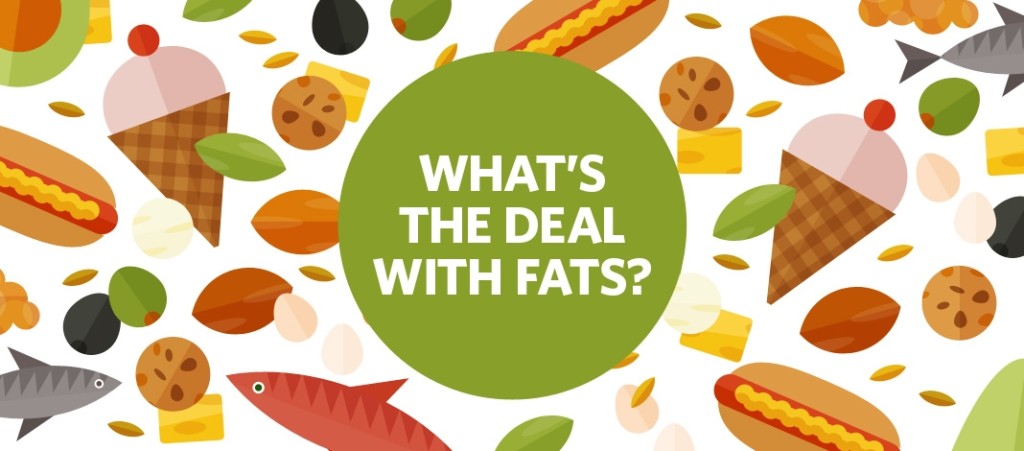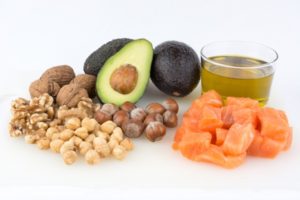Fats: The Good, The Bad, and The Ugly

So what is the story behind fat? The type of fat you eat is more important than the amount of fat you eat. Whether a particular fat is healthy or unhealthy depends on how your body responds to the fat. ‘Bad’ fats turn off your fat-burning genes while ‘good’ fats increase your metabolism and actually help you burn fat. It is important to remember that fat is crucial for your cells to function optimally.
When you understand the different types of fat and which foods contain which type of fat, you can use it to your advantage to increase your ability to burn fat and lose weight.
Many people have turned to low-fat diets in order to lose weight, however the problem with this is that these diets are often rich in starchy or sugary carbohydrates, which in turn raises your insulin levels and promotes weight gain.
Fats can be classified as ‘good’, ‘bad’ and ‘ugly’. Lets look at all three a little more closely.


GOOD FATS
1) Omega 3
The king of the good fats is the Omega-3. Omega 3 has many beneficial qualities including reducing systemic inflammation, reducing oxidative stress, reducing triglycerides and LDL cholesterol levels and increasing immune function just to name a few.
Omega 3 can be sourced from the following foods: Wild salmon, herring, anchovies, flaxseeds and flax oil, walnuts, pumpkin seeds and hemp seeds.
2) Monounsaturated fats
These are considered to be one of the healthiest types of fat as it has none of the adverse effects associated with saturated fats, trans fat or omega 6 polyunsaturated vegetable oil.
These can be sourced from the following foods: Olive oil, hazelnuts, almonds,brazil nuts, cashews, avocado, sesame seeds, pumpkin seeds
3) Saturated fats
Many saturated fats are considered bad due to increasing the amount of LDL cholesterol (aka bad cholesterol), the stuff that forms plaque in our arteries, and subsequently decreasing the amount of HDL cholesterol (aka good cholesterol), the stuff that chips away the plaque forming in our arteries.
These saturated fats are found in commercially raised beef, pork, lamb, poultry, and dairy. However, having some saturated fat, especially those containing Lauric Acid, is necessary as this is the preferred source of energy by heart cells.
Sources of this fat can be found in the following foods: Coconut products, macadamia nut oil, palm fruit oil.
4) Unrefined Omega-6 polyunsaturated fats
These fats are only required in small doses. Only use the expeller or cold-pressed versions (found on the label of the bottle) of the following oils: grape seed oil, sunflower oil, safflower oil, walnut oil, sesame oil

BAD FATS
These fats affect your metabolism adversely, making it difficult to burn the weight you would like to. They include:
- Commercially available vegetable oils (corn, soy, vegetable)
- Refined polyunsaturated vegetable oil
- Most saturated fats (meat, poultry and dairy foods are the main sources of these fats in our diet)
UGLY FATS
These are man made fats that simply cannot be properly digested by your body. They interrupt the natural operation of your cells and have the capacity to affect your health in radically negative ways. They also block your metabolism, create weight gain and increase your risk of chronic disease. These fats should be avoided.
Hydrogenated oils or Trans fats are the most dangerous. Trans fats are found in nearly all processed or commercially baked or packaged foods. Some examples of trans fat include: vegetable shortening, some margarines, crackers, candies, cookies, snack foods, fried foods and baked goods.
In summary, the recipe for weight loss with fat is to include 1-2 servings of ‘good’ fats with each meal, plus the occasional ‘bad’ fat, while avoiding the ‘ugly’ fats. This will result in an increase in your metabolism and improve your ability to burn fat.
